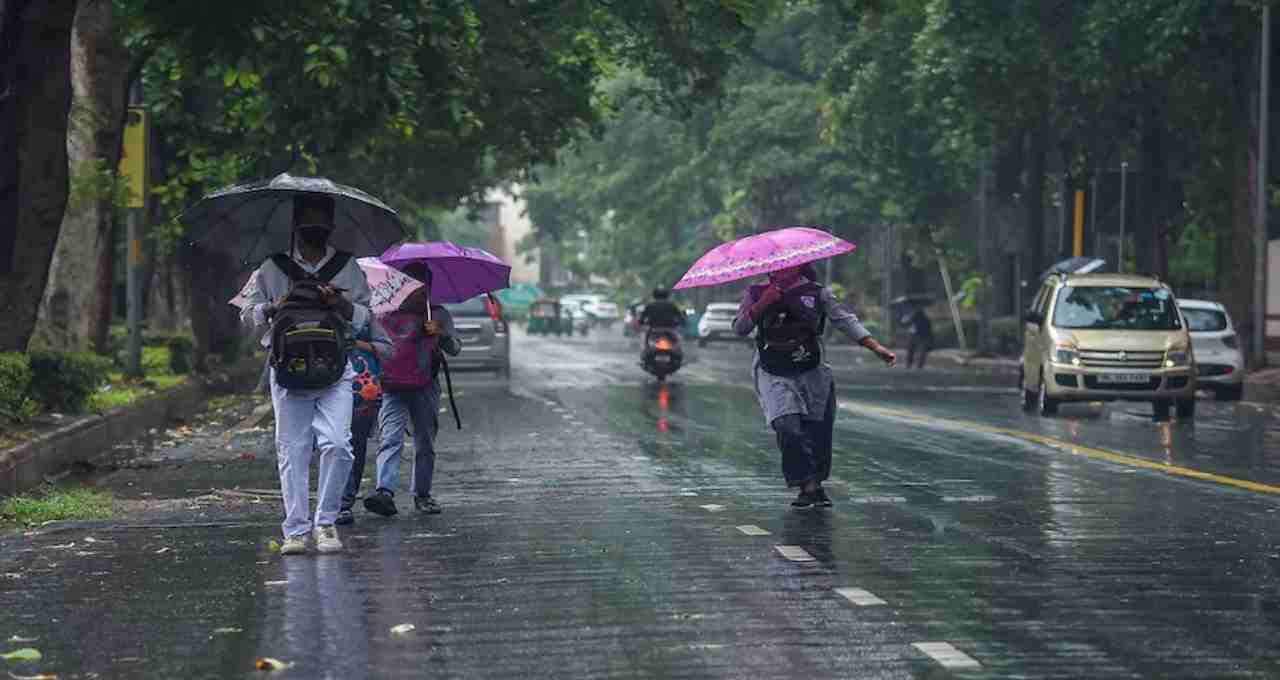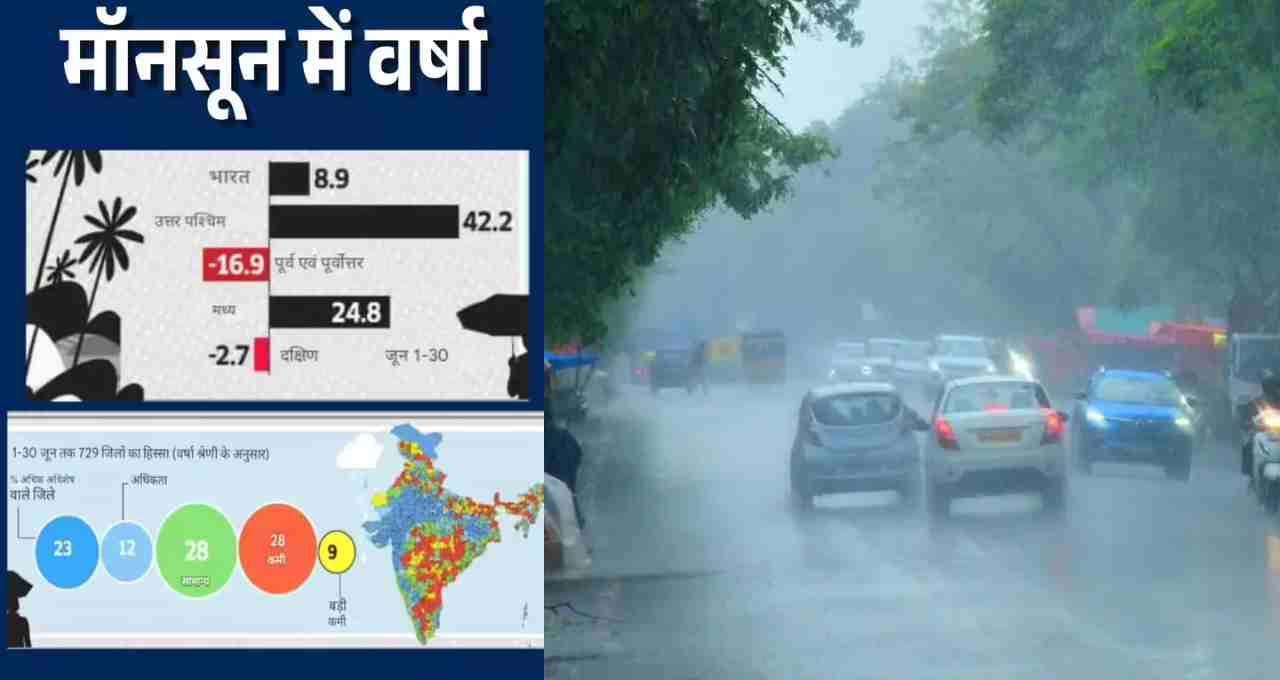India is likely to receive above-normal rainfall this July. The Indian Meteorological Department (IMD) announced on Monday that July rainfall could be around 106% of the Long Period Average (LPA). This is good news for agriculture and water storage.
Weather: The Indian Meteorological Department (IMD) has given significant positive news regarding the monsoon across the country. It is predicted that India will receive more than normal rainfall in July, up to 106% of the Long Period Average (LPA). This means that heavy rainfall is expected this July, which is a very positive sign for farmers and those struggling with water scarcity. Importantly, the monsoon covered the entire country by June 29 this year, nine days ahead of the normal date. Previously, in 2020, the monsoon had covered the entire country by June 26.
The IMD has stated that approximately 28 centimeters of rain may occur this July, which will be the most crucial month of the monsoon season (June to September). It is noteworthy that in India, with an average monsoon season of 87 centimeters, rainfall between 96% to 104% is considered normal, while the forecast of 106% indicates above-average conditions.
Heavy Rainfall in Central India and Hilly States, Disappointment in the Northeast

According to the IMD, several areas, including Central India, Himachal Pradesh, Uttarakhand, Haryana, and Delhi, will witness good rainfall in July. Active low-pressure systems forming in these regions will lead to more active clouds, resulting in continuous rainfall. This also raises good hopes for agriculture and improvement in water levels.
On the other hand, below-normal rainfall is predicted for most parts of Northeast India, some areas of East India, some parts of South Peninsular India, and selected regions of Northwest India. This means that these states will still have to worry about drought-like conditions.
Monsoon Arrived Early, But Fluctuations in Speed
This time, the monsoon arrived in Kerala on May 24, earlier than the normal date. This was the first time since 2009 that the monsoon reached the Indian mainland so early. However, its speed remained slow from May 29 to June 16, and rainfall was delayed in many areas. But it then gained momentum and covered the entire country by June 29, which is also considered a very positive sign historically.
According to weather experts, this early start of the monsoon and the prediction of abundant rainfall in July could prove to be a great boon for farmers. Along with assisting in the sowing of Kharif crops, it will also play an important role in filling reservoirs and groundwater levels, improving conditions for drinking water and power generation.

Boost to Agriculture and Economy
Approximately 42% of India's population depends directly or indirectly on agriculture for their livelihood, and the contribution of agriculture to the country's GDP is considered to be about 18%. In such a scenario, above-normal rainfall would mean that farmers will have to spend less on irrigation, and the expectation of better yields will also increase. Additionally, good rainfall will fill the country's major reservoirs, which are used not only for agriculture but also for drinking water in urban areas and for industries. Experts believe that if the IMD's forecast is accurate, the rural economy could get a huge boost.
Mixed Feelings: Joy and Concern
However, the possibility of less rainfall in the Northeast and some southern states remains a matter of concern. These regions already face water scarcity and drought-like conditions, and if there is less rain in July as well, the situation could worsen. The IMD has advised all states to work in coordination with local disaster management teams and agricultural departments to prepare and manage the effects of more or less rainfall.















